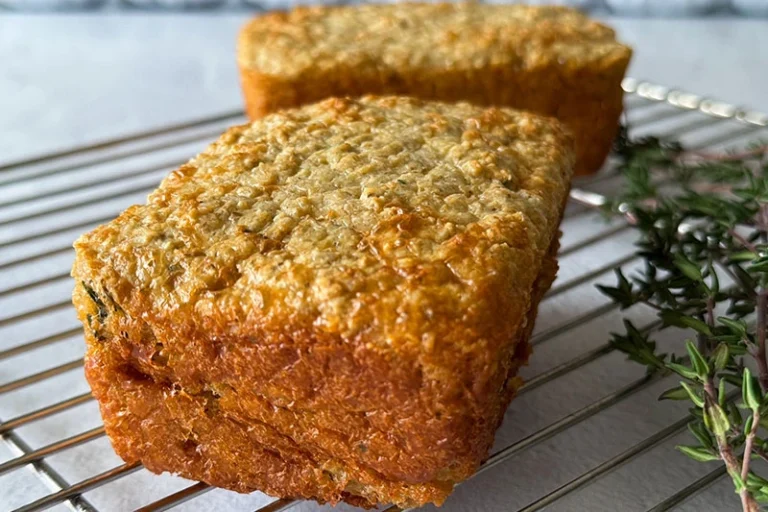
My Curated Tastes is reader-supported. When you buy through links on our site, we may earn an affiliate commission at no extra cost to you. As an Amazon Associate I earn from qualifying purchases.
2024 was the year of cottage cheese recipes, and with good reason. It is a high protein food, low in calories, has a mild flavor and if you are using the fat-free version like I do, low on saturated fats. I wanted to come up with high protein, good for me, bread options that were low on points (I’m a life long Weight Watcher and do count points.) and high on protein so I felt full and satisfied but also had to be sure they tasted good. A pretty tall order, don’t you think? I also wanted to get the “super food” oatmeal into the mix. I know how good oatmeal is for the body and I know all that it can do for you, but I cannot stand hot oatmeal in the morning. To me is it gruel or something the “have nots” eat on Big Brother! UGH. I searched and played in the kitchen with endless recipes and ingredient combos until I finally developed this high protein cottage cheese bread with oatmeal recipe.
I thought if I could incorporate oatmeal (now a zero point food at WW) and a lot of good low-fat protein (cottage cheese) into a slice of bread, I’d have hit a home run. I’d be able to get the satisfaction of eating bread but also know I was putting a ton of good for me, healthy ingredients into my body. And since I’m already “all in” on cottage cheese, (hey, I’ve worked it into my cottage cheese cake, cottage cheese filled strawberries and sugar-free chocolate protein truffles), I knew this cottage cheese – oatmeal connection was going to be a winner!
The ingredients used in this cottage cheese bread with oatmeal recipe
Obviously, we have cottage cheese. I steer towards fat-free (I try to limit my saturated fats and really don’t need those extra points in my diet.). BUT, you can easily use a low-fat or full fat cottage cheese. Before all the anti-cottage people leave the page, note that you blend the cottage cheese until smooth so there are no lumps and no texture issues. You won’t even know there is cottage cheese in the recipe.
You could substitute ricotta cheese for the cottage cheese. You won’t get as much protein, but it is an option.
For even more protein, there are four eggs per loaf. That is a really nice, healthy dose of protein in every slice. Although I didn’t add it in this basic recipe, you could add some cheese to the mix. 1/4 – 1/2 cup of grated Parmesan will add flavor and more protein. You could try adding ground flaxseed and nutritional yeast too. Your call.
Then there is the oatmeal. While I made this recipe half a dozen times to come up with the right ratio of whole oatmeal to oat flour, I finally settled on one cup of oatmeal (rolled oats or quick cooking oats) and one cup of ground up oats (oat flour). I found this to give me the best bread texture. Your certainly can use all oat flour or all whole oatmeal, so experiment to find what you like best. While you can buy oat flour, it is much more economical to make your own. Just add a cup and a quarter of oatmeal to a blender or food processor and blend until the texture of flour. (when blended, it takes a little more than the measured cup of whole oatmeal to make a cup of oat flour) It doesn’t have to be finely ground. I did make the bread with all oat flour and various ratios of whole oatmeal to oat flour and liked this ratio the best. There was a good texture to the bread and it reduced the WW points per slice to just one point. A big plus for us WW members. While both whole oatmeal and oat flour have the same nutritional value, they do work in your body differently. See frequently asked questions and answers about oatmeal below.
I found that adding fresh herbs really made a difference and could dramatically change the flavor profile. I tried oregano, thyme and rosemary and really loved the rosemary. Be sure to chop it finely. Fresh hers is another area to experiment with when making this bread.
One last note on ingredients. I also did several loafs with toppings. I sprinkled sunflower seeds or pepitas on top. On another loaf, I sprinkled whole flaxseeds, chia and hemp seeds on top. They all add amazing nutritional value to the loaf of bread, and a little crunch, so consider adding your favorites. This recipe is so versatile and easy to make your own, all while get sound nutrition into your body.
As I work at staying away from overly processed foods like bread from the grocery store, I find that nutritionally sound recipes made with healthy whole foods are just so satisfying.
FREQUENTLY ASKED QUESTIONS AND ANSWERS ABOUT OATMEAL
- High in soluble fiber called beta-glucan, which helps lower cholesterol levels and blood sugar
- Rich in important minerals including manganese, phosphorus, magnesium, and iron
- Good source of antioxidants, particularly avenanthramides which are unique to oats
- Contains both soluble and insoluble fiber for digestive health
- Provides quality protein (about 5 grams per serving)
Weight Management Benefits:
- Creates a feeling of fullness that can last several hours
- Low in calories while being nutrient-dense
- Slow-digesting carbohydrates help maintain steady blood sugar
- High fiber content helps control appetite throughout the day
- Can help reduce overall daily calorie intake
- One one Weight Watcher point per slice for those on the Weight Watchers plan (WW).
Heart Health Benefits:
- Reduces LDL (“bad”) cholesterol levels
- Helps maintain healthy blood pressure
- Anti-inflammatory properties support cardiovascular health
- May reduce risk of heart disease
- Supports healthy arterial function
Blood Sugar Control:
- Slows digestion of carbohydrates
- Reduces glucose absorption
- Improves insulin sensitivity
- Particularly beneficial for type 2 diabetes management
- Helps prevent blood sugar spikes
Digestive Health Benefits:
- Feeds beneficial gut bacteria
- Helps prevent constipation
- Supports regular bowel movements
- Reduces risk of colorectal cancer
- Helps maintain healthy gut barrier function
Additional Health Benefits:
- May help reduce asthma risk in children
- Supports healthy immune system function
- Can improve skin health due to antioxidant content
- May help reduce chronic inflammation
- Supports healthy aging through various nutrients
The main differences in how your body digests oatmeal versus oat flour come down to processing and surface area, which affects digestion speed and glycemic impact:
Oatmeal Digestion:
- The whole or steel-cut oats maintain their fiber matrix structure
- Takes longer to break down in the digestive system
- Slower release of glucose into bloodstream
- Provides sustained energy over a longer period
- Requires more chewing, which triggers better satiety signals
- Takes longer for digestive enzymes to access the starches
- Maintains lower glycemic impact
Oat Flour Digestion:
- Ground into fine particles, breaking down the original fiber matrix
- Significantly increased surface area exposure to digestive enzymes
- Much faster digestion and conversion to glucose
- More rapid absorption into bloodstream
- Higher glycemic impact than whole oats
- May cause faster blood sugar spikes
- Less time spent in digestive tract
Despite these differences, both forms still contain:
- The same basic nutritional components
- Similar amounts of fiber, protein, and nutrients
- Beta-glucan (though it may work differently due to processing)
- Beneficial minerals and antioxidants
For blood sugar management and sustained energy, whole oat forms (steel-cut, rolled) are generally better choices than oat flour. However, oat flour can still be part of a healthy diet when used appropriately.
Which type of oatmeal is healthiest? Steel-cut oats are considered the healthiest, followed by rolled oats. They’re least processed and have a lower glycemic index. Instant oatmeal is the most processed and typically contains added sugars and artificial ingredients. However, any plain oatmeal variety still offers significant nutritional benefits.
Yes, eating oatmeal daily can be beneficial. It’s rich in fiber and nutrients, helps maintain healthy cholesterol levels, and supports weight management. However, variety in your diet is important, so consider alternating oatmeal with other healthy breakfast options.
Morning is optimal because:
- The fiber provides sustained energy throughout the day
- The complex carbohydrates help stabilize blood sugar
- It keeps you feeling full during busy morning hours However, oatmeal can be beneficial any time of day, including as a pre-workout meal or evening snack.
- How much oatmeal should I eat per serving?
- The recommended serving size is ½ cup of dry oats (which makes about 1 cup cooked). This provides:
- About 150 calories
- 4 grams of fiber
- 5 grams of protein
- Adequate portion for most adults
- What’s the best way to make oatmeal more filling and tastier?
- Popular healthy additions include:
- Fresh fruits (berries, bananas, apples)
- Nuts and seeds (almonds, walnuts, chia seeds)
- Protein sources (nut butter, protein powder)
- Natural sweeteners (honey, maple syrup)
- Spices (cinnamon, nutmeg, ginger)
- Milk or plant-based alternatives instead of water for cooking
How to make this cottage cheese bread
Start by preheating your oven to 350 degrees F. and spraying your loaf pan (s) with cooking spray. I made this recipe in both a regular sized loaf pan and in mini loaf pans so I could share with others when doing taste testing. You can easily wrap the smaller individual loafs and keep them in the refrigerator for up to a week (toast a slice for even more texture) or freeze the loafs for up to a month. Just wrap in foil and then place in a plastic sealed bag.
Next, in a blender, mix the cottage cheese and eggs until completely smooth. While I tried using a hand mixer for this, the best results happened in a blender and there were no lumps.
If you are grinding your own oat flour, add the 1 1/4 cups of whole oatmeal to a blender or food processor and blend until you have the texture of flour. Don’t worry if it is a bit coarse or they are some whole oats left, it will all mix together.
In a bowl, add the dry ingredients: whole oats, oat flour, baking powder, baking soda, and salt. Whisk to combine.
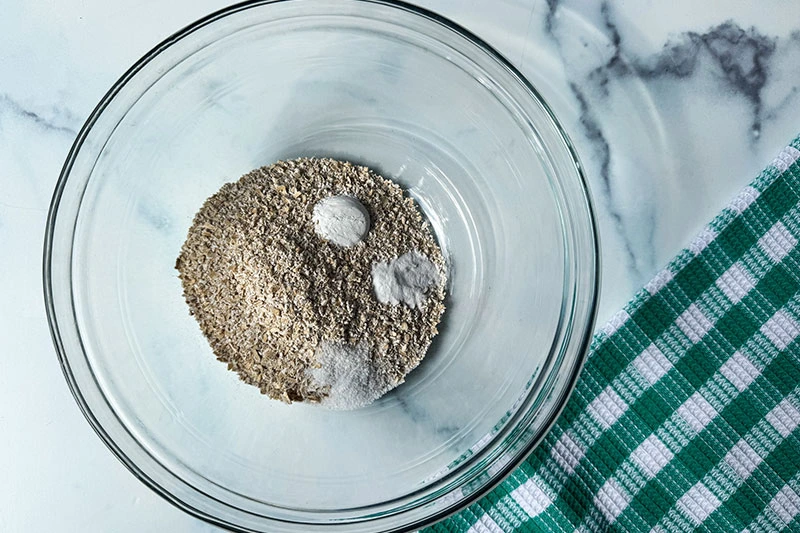
Add the cottage cheese and egg mixture to the bowl and fold to combine. Don’t overwork the mix, you don’t want it tough.
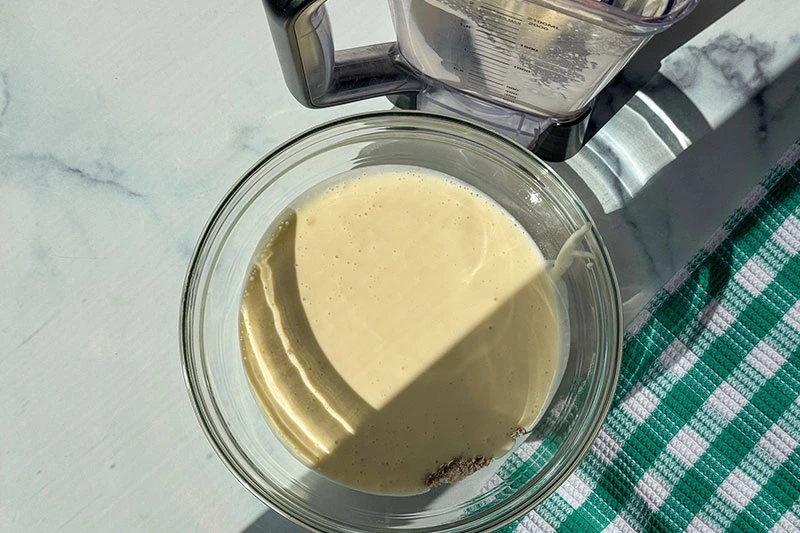
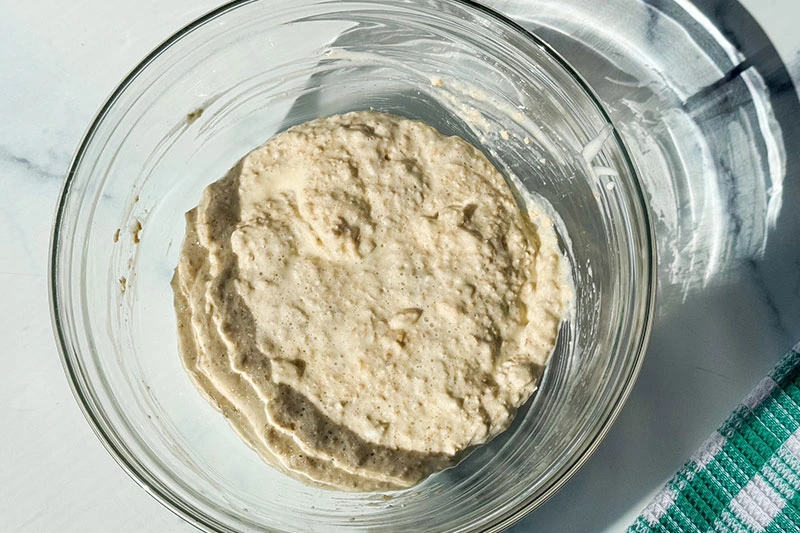
Add in the finely chopped rosemary, or fresh herbs of your choice, and fold it into the mix.
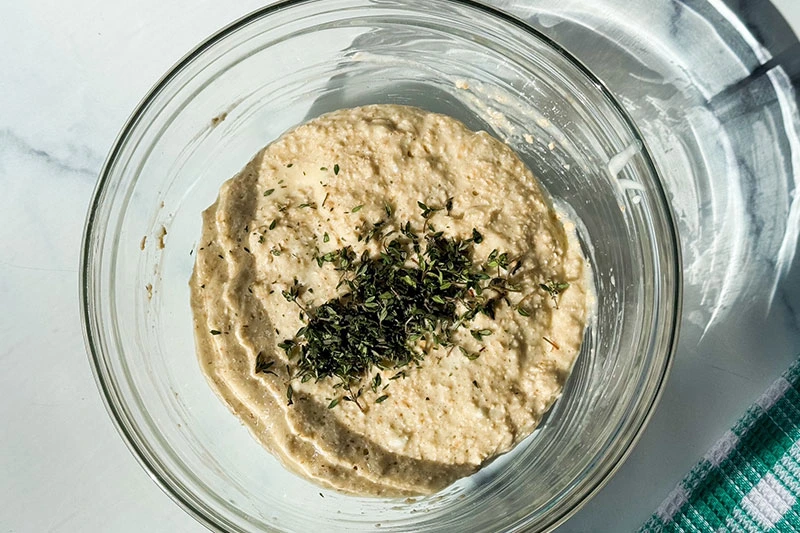
Add the mixture to your loaf pan (s) and level the top. If you are adding seeds, now is the time to sprinkle them on top. Place in the oven and bake for about 25 minutes. Use a toothpick to test doneness. Insert in the middle of the loaf and if it comes out clean, the bread is done. If it is wet, let it bake another 3-5 minutes and test again.
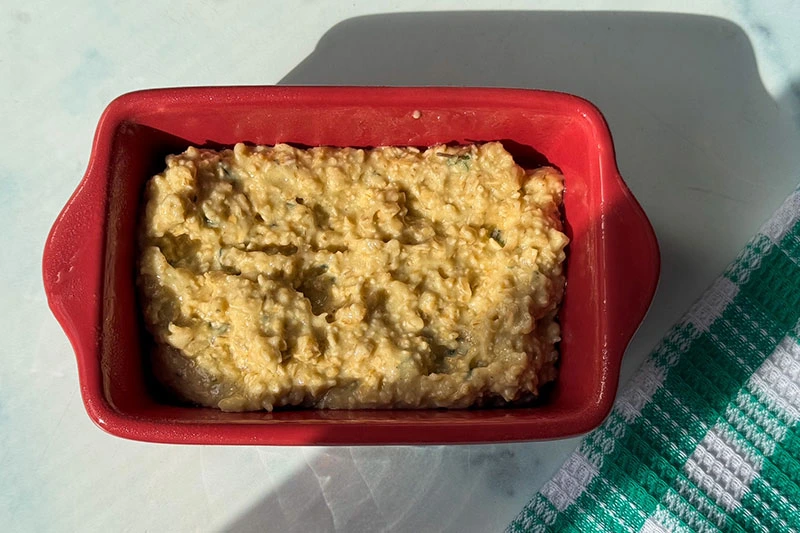
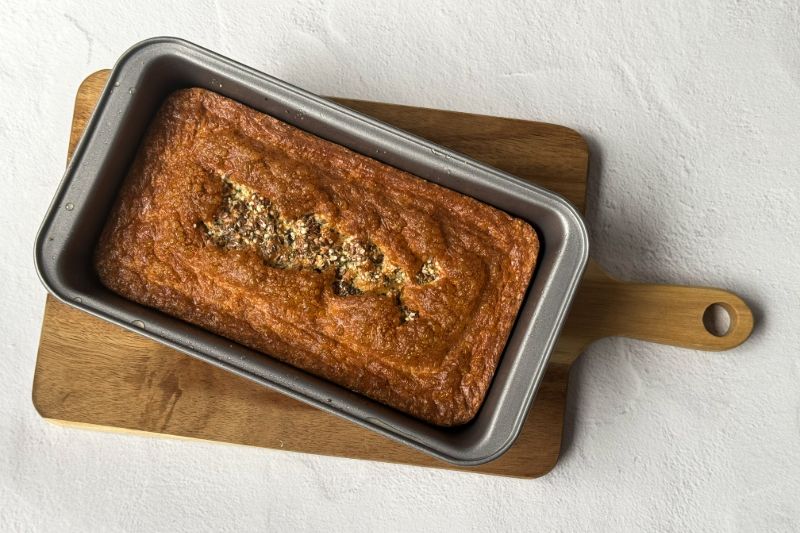
Once done, remove from the oven and let cool in the pan about 10 minutes. Run a knife around the edges of the pan to loosen the loaf and then let finish cooling on a rack.
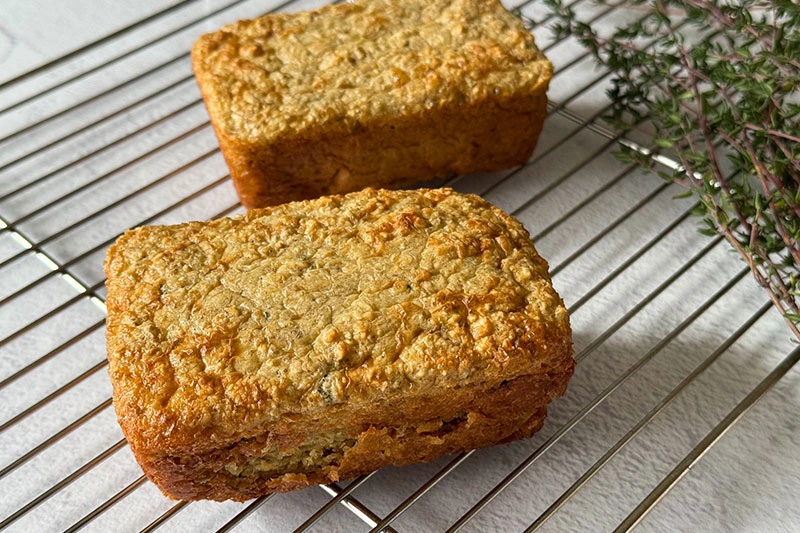
Slice the bread and serve with your favorite butter or try my sugar free raspberry jam.
Use for sandwiches or I really enjoy it with coffee or tea as a snack. Did you enjoy this bread? How did you make it your own? I’d love to hear from you. Please leave a rating and comment below.
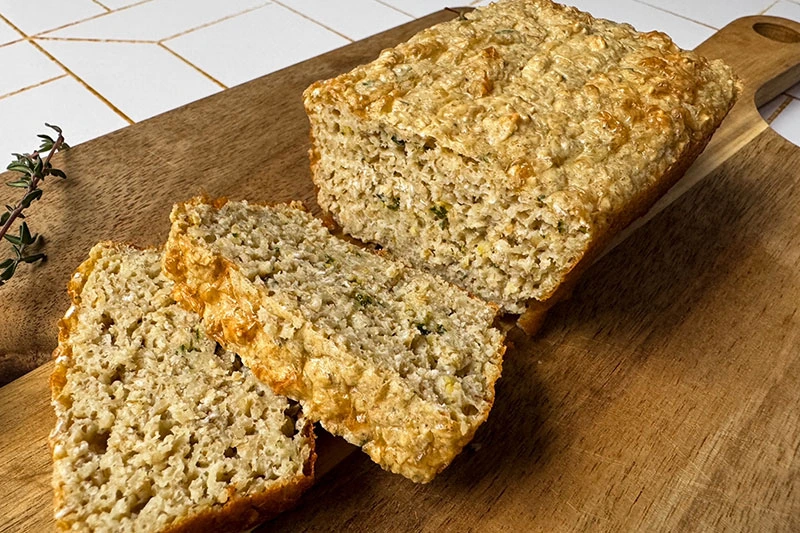
Looking for other high protein recipes? Try some of my favorites:
Vanilla Protein Waffles for Two
High Protein Waffles made with Chicken
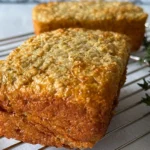
Cottage Cheese Bread with Oatmeal
Nutritional information is only an estimate. The accuracy of the nutritional information for any recipe on this site is not guaranteed.
Ingredients
- 2 cup fat-free cottage cheese
- 4 large eggs
- 1 cup oatmeal
- 1 cup oat flour
- 2 tsp baking powder
- 1 tsp baking soda
- 1 tsp salt
- 1 Tbsp. Fresh rosemary, chopped fine
- Cooking spray
Instructions
- Preheat the oven to 350 degrees F. Spray one 9 x 5 loaf pan or four mini loaf pans (6 x 3 x 2 inches - approximately) with cooking spray.
- In a blender, mix the cottage cheese and eggs until completely smooth.
- In a large bowl, mix the oatmeal, oat flour, baking powder, baking soda, and salt. Add in the rosemary and stir until all dry ingredients are well combined.
- Add the cottage cheese mixture to the dry ingredients and gently fold into the dry mix. Be careful not to over mix, as this can affect the bread’s texture.
- Add the batter to the prepared loaf pan (s) and bake in the preheated oven for about 25 minutes – 35 minutes depending on your oven. Use the toothpick method to check doneness. Insert into the middle of the loaf and if it comes out clean, the bread is done. If it is wet, let it bake another 3-5 minutes and test again.
- Let the bread cool in the pan for 10 minutes and then remove to a rack to let it cool completely. Slice and enjoy.






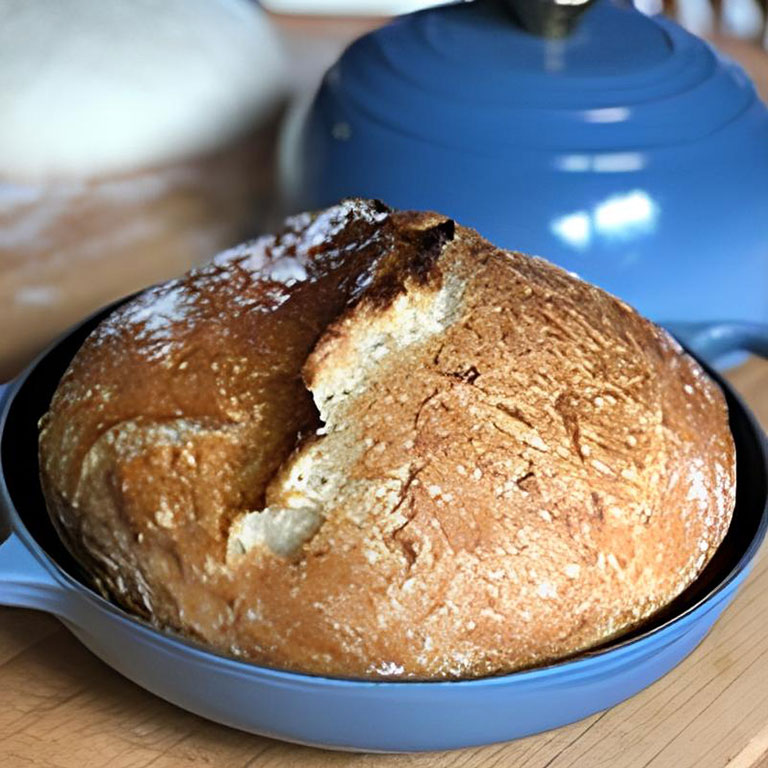




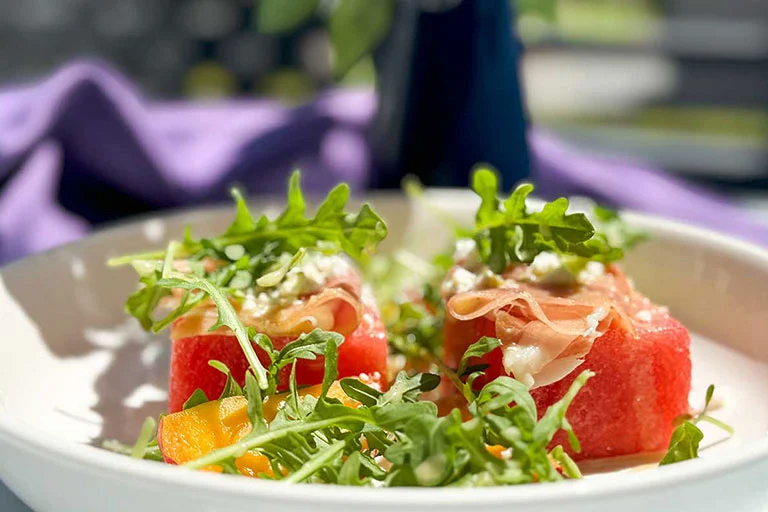
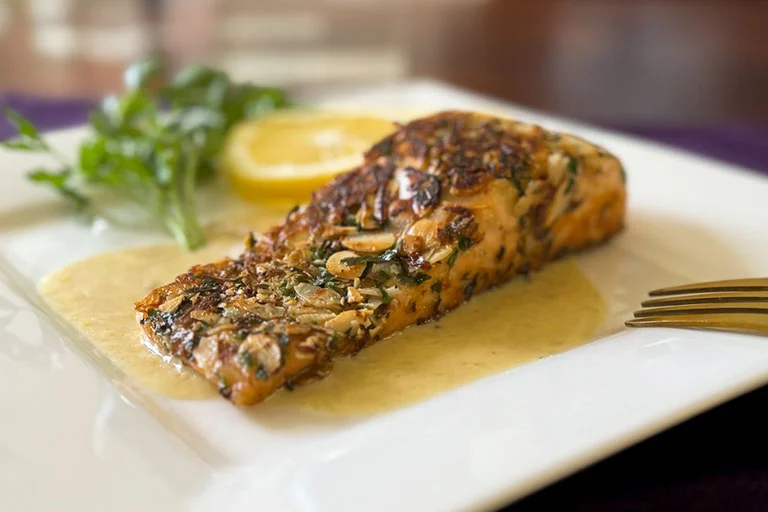




5 thoughts on “Cottage Cheese Bread with Oatmeal”
This bread sounds delicious! I’m wondering about the nutrition values. I didn’t see the calories per slice etc listed. Thank you for any/information.
Hi Pamela: Thanks for pointing it out…software glitch. It has been updated but please note, the calories are an estimate created by software. Hope you’ll be stopping by again. Let me know how the bread turns out.
Still no nutritional info?
Hi Kathryn:
No, we’ve decided not to use the automated calculations of the software because they aren’t very reliable. Rather than give bad information, I decided to omit it for now. If we find a reliable tool, I’ll add it. Sorry for the inconvenience.